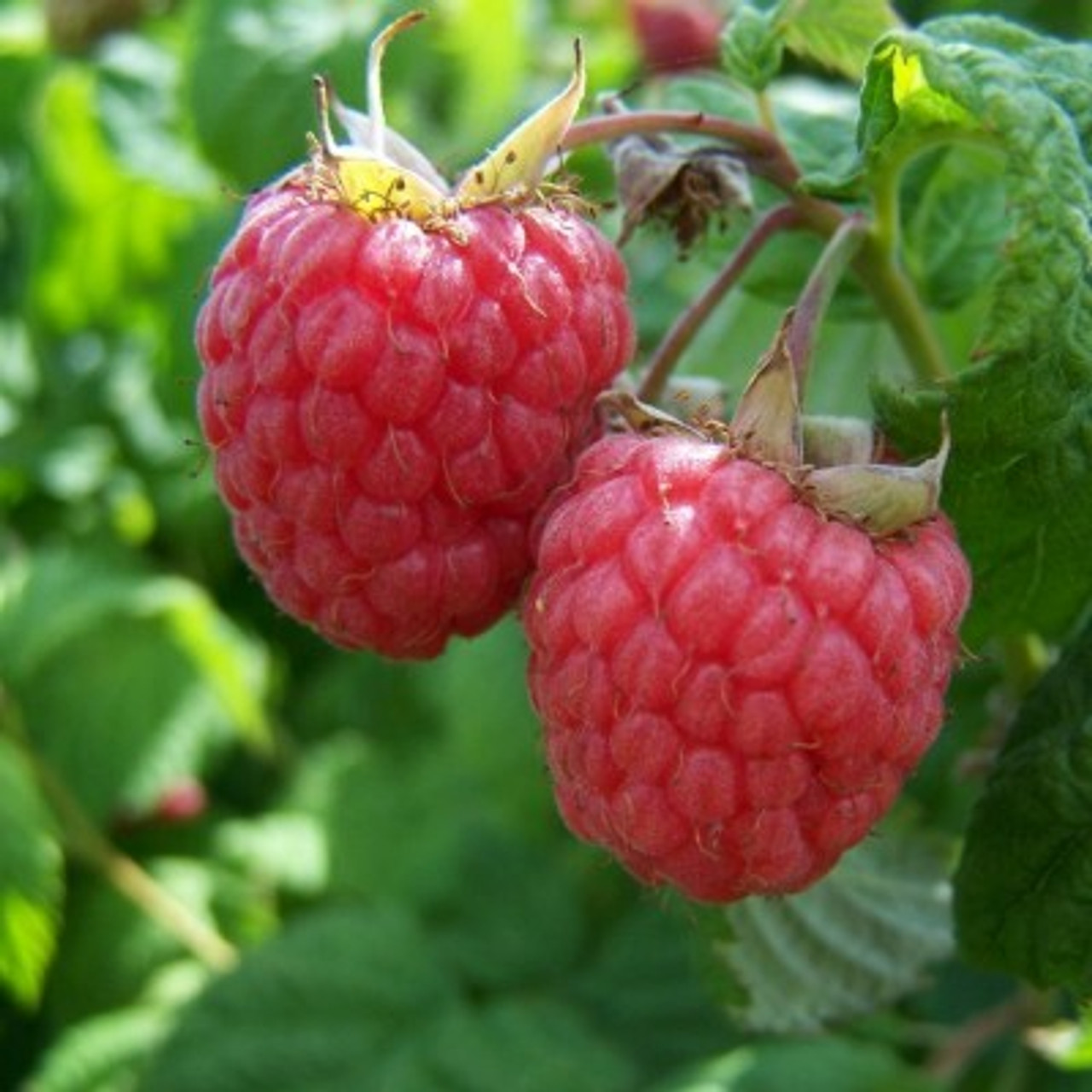
Raspberry
Native to Europe and Northern Asia, raspberries are one of the best known and most eagerly awaited summer fruit. And, whether you plant Summer or Autumn fruiting, - red berried or yellow, their delicious tangy taste evokes thoughts of cream and sunshine, of deckchairs and mown grass lawns! Hardy and self-fertile, they are reasonably hungry feeders so they benefit from a well prepared patch of land with manure dug in, and grown in a sunny spot with a bit of shelter from the wind. If you're thinking of growing both Summer and Autumn varieties (always a good thing as it extends the season for available fruit), then keep them separate, as the pruning regime is different. Summer rasps fruit on the previous season's canes, whereas Autumn fruiting rasps fruit on the current year's canes.
In their first year, Summer fruiting raspberries produce new unbranched stems ('Primocane') growing anything up to 1.5-2.5metres (5 to 8ft) with many large pinnate compound leaves with five or seven leaflets, but usually no flowers. Then, in their second year(now as a 'Floricane') the stems don't grow any taller, but produce side shoots which bear smaller leaves with three or five leaflets, and the flowers are produced in late spring on the tips of these side shoots. By contrast, Autumn raspberries ('Primocane') produce canes with flowers in Spring, and fruit in Autumn - all in the same year.

